#Niles Heron
Text
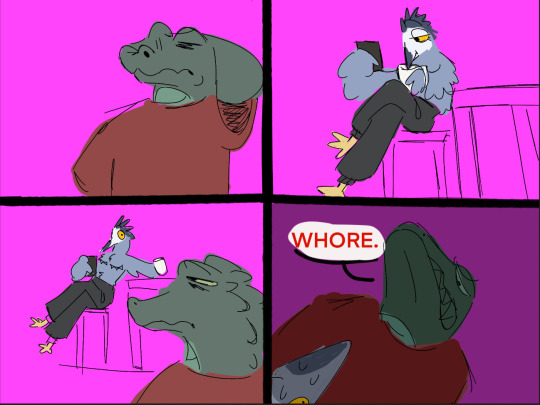
Issue 3: Put a shirt on man
4 notes
·
View notes
Text
If you're interested in more art from me, I'll probably be posting over here on https://www.tumblr.com/heronandnile more often. It's not TF2 or any fandom stuff, it's a webcomic blog about two of my own characters :)
2 notes
·
View notes
Text

Sony A7C with Tamron 70-180 f/2.8 - Herons at Sunset, somewhere along the Nile River, Egypt. October 2022.
0 notes
Text
(Jjsheh. This is perhaps my most unhinged essay yet, brace yourselves. I know it's not very coherent, I sound like I'm tripping, rambling about ancient Egyptian deities and all. I'm not the only one to have talked of rebirth though so hopefully I'm not alone in this mental collapse.)
I'm a wreck. It's just such BLATANT BUDDIE SUBTEXT to air THESE SCENES in the same episode!!!!
First, Eddie finding out Buck went on a date with a man and his stunned
"Omg I need to reconstruct my entire worldview. But I'm not weirded out!! I'm an ALLY!!"-deer in the headlights reaction to that!!

Finding out that both Buck and Tommy are into men will be such a curveball for Eddie, hitting him directly in the solar plexus, leaving him gasping.
The images that will start sprouting in his mind...


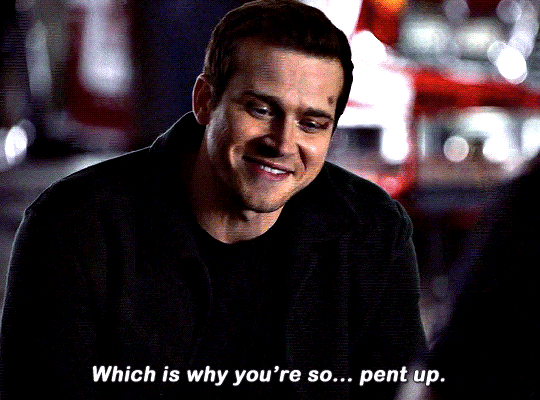

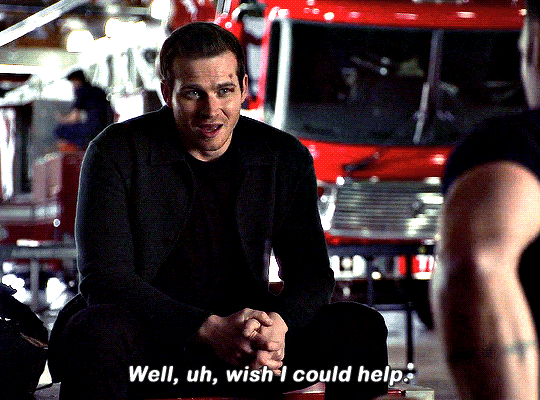
And the way that suddenly they're BOTH stumbling in this gigantic maze of confusion and questioning, looking at each other anew...
realising they need to reconstruct their entire worldviews because all of a sudden... They've been shattered.
The way that Buck looks at Eddie...?

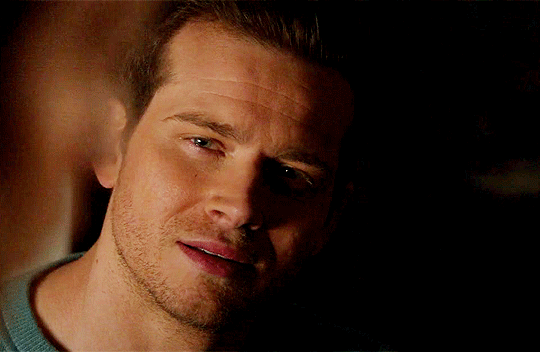
The mirrored MASKS that both of these lines are!!


Starting to realise their worlds are in ashes.
Then rebirth.
Phoenix rising!!!
It's that treasure hunt riddle again.I've tried to figure it out and the way I read it, I think it's about feelings realization.
The "Narrow place" in the riddle sounds like an obvious arrow to Egypt. That's what the hebrew people called it or something, due to the divisional geography/the stories about them being enslaved there. Something like that.
And of course the river's edge in the riddle would then be The Nile. Denial.
And that heron? The ancient egyptian version of a Phoenix, Bennu. The deity of sun, creation, rebirth.
And what's a secret treasure by denial's edge? It's love. A secret treasure. Precious, yet something you want to hide. Hidden. Buried.
And the bullfrog is a reference to a line in a song, I think. "Jeremiah was a bullfrog".
Originally the line was supposed to be "Jeremiah was a prophet". The assistant in the episode, who was asked to hide the treasure... is called Jeremiah.
Jeremiah, the prophet, according to the Bible apparently traveled to Egypt himself.
But in the treasure hunt episode he steals the treasure and takes off to Maledives - an island without river's, btw!! No DeNial there!
Also... Another link to Egypt/Denial is the bullfrog croaking good measure.
"Ancient Egyptians used weights, like this small frog, to help calculate the value of goods. One Ancient Egyptian unit of measurement was the qedet, equivalent to about nine grams. "
"The Ancient Egyptians linked frogs to fertility and rebirth, likely because of the animal’s prolific reproduction.
These ties to abundance may have made frogs a suitable form for objects used to determine value."
Secret treasure, frogs, measurement, value, herons, narrow place = Egypt, the river's edge... (& My loss of sanity) Lots of links.
So let's see.
I walked along the river's Denial's edge
To hide my secret treasure love
The heron phoenix soared (= I burned, I was reborn.)
The gray bridge roared I saw you. (Because the bridge would be a reference to the "I see you!!" scene with Lola and Norman on that bridge, I think?)
And
"Isn't that what we all want in a partner, to be seen?"
I stopped beneath the willow tree
In the narrow place
And saw a light beam fall upon my treasured place hidden love
The light beam... It think it's truth? Realization, rebirth...
Btw, in the Bible Jeremiah writes about willow trees with much passion. It symbolizes hope, will grow by the river even in times of draught. So trust the Lord (the showmakers).
Also, this recent data of Marisol being nunlike?? What's "Nun" in relation to the Egypt theme?
Nun was represented as a frog or a frog-headed man (as a member of the Ogdoad) but could also be depicted as a bearded man with blue or green skin (reflecting his link with the river Nile and fertility).
In the latter form he can look fairly similar to Hapi (LOL), the god of the Nile, and often appears either standing on a solar boat or rising from the waters holding a palm frond (a symbol of long life), Occasionally, he appears as a hermaphrodite with pronounced breasts.
Nu ("Watery One") or Nun ("The Inert One") (Ancient Egyptian: nnw Nānaw; Coptic: Ⲛⲟⲩⲛ Noun), in ancient Egyptian religion, is the personification of the primordial watery abyss which existed at the time of creation and from which the creator sun god Ra arose.[1]
So let's watch the sun, rising from the denial!
#buddie#911 buddie#eddie diaz#evan buckley#buddie 911#evan buck buckley#911 on abc#911 abc#tv: 911#eddie díaz#911 treasure hunt#911 spoilers#911 speculation#I am not the gif wizard#911 treasure hunt riddle
28 notes
·
View notes
Text

A collage I made a few years ago, or some of my favorite animals featured in Wild Kratts.
I love the animation for this show, all the animals have so much personality while still looking pretty dang accurate.
Animals in this collage:
Chinese pangolins (accidentally put that picture in there twice)
Black-footed ferrets
Secretary bird
Antelope jackrabbit
Pronghorns
Peregrine falcon and chicks
American pine marten
American kestrel
Burrowing owl
Canada lynx
Golden-tailed sapphire (hummingbird)
Streaked tenrec
Loggerhead shrike
Elf owl
Bobcat
Fire salamander
Purple martin
Superb bird-of-paradise
Hawksbill sea turtle
Black-capped chickadee
Great emerald pondhawk (dragonfly)
Emerald-chinned hummingbird
Great blue heron
Arctic wolf
Cheetah
African crested porcupine
Pileated woodpecker
European hedgehog
Blue jay
Dyeing poison dart frog
Bald eagle
Nile crocodile
American robin
Manta ray
Bat-eared fox
African wildcat
Red panda
Osprey
Golden bamboo lemur
Ocelot
Tokay gecko
Thomson’s gazelle
Wandering glider/globe skimmer (dragonfly)
Green heron
Spotted eagle-owl
Gray wolves
Prairie falcon
Green-breasted mango (hummingbird)
Dholes
Husky dog
Three-toed sloth
Eastern screech-owl
#my edits#wild kratts#birdposting#I guess#there are …#(counts on fingers)#…….#21 species of birds in this collage#i think
13 notes
·
View notes
Text

alter names relating to bugs, nature, outside, and colours/colouring ⚘️🐛
requested by anon

masculine
Buck, Cedar, Bear, Lark, Bramble, Saffron, Heron, Robin, Nile, Maki, Kai, Orson, Gecko, Pincher, Viceroy, Alder, Attacus, Mantis, Cade, Cricket, Carabus, Ivory, Azure, Hyacinth, Evette, Bruno, Leo, Mydas, Apalone, Hawkbill
feminine
Aurora, Blossom, Daisy, Flora, Dawn, Doe, Ivy, Acacia, Azalea, Daphne, Dove, Marigold, Myrtle, Maybelle, Lavender, Adalia, Kaira, Nephila, Andrea, Clementine, Jade, Ruby, Mabel, Equine, Wisteria, Peach
androgynous or other
Citrus, Blue, Aspen, Brook/Brooke, Ash, Autumn, Coral, Hazel, Fawn, Cub, Briar, Juniper, Basil, Fox, Iris, Pepper, Wren, Rowan, Kestrel, Mint, Fern, Sterling, Reed, Paloma, Nieve, Cielo, Harvest, October, Raine, Dimitri, Panda, Bambi, Beetle, Tyria, River, Lysander, Malka, Bee, Amber, Auburn, Sienna, Raven, Vaiva, Scribble, Equinox, Tawny, Willow, Garnet, Mouse, Crow


#actually traumagenic#anti endo#complex dissociative disorder#did system#endos dni#traumagenic system#alter help#system help#—mod delphie#— alter names
7 notes
·
View notes
Text

Nobody told me london was such a good bird spotting spot??? The park by the Buckingham Palace had some INSANE bird activity. 3 different type of geese, a really gorgeous heron AND a black Swan too??? I was also really excited to see the nile goose, we have two of them at home too. They look really creepy I love them lol. They also had a Canada goose which I sadly couldn't capture. Was really enraptured by the red throated goose, they were SOOOOO gorgeous
Also was surprised to see that green parrot whose English name eludes me. They were SO chatty in Hyde Park



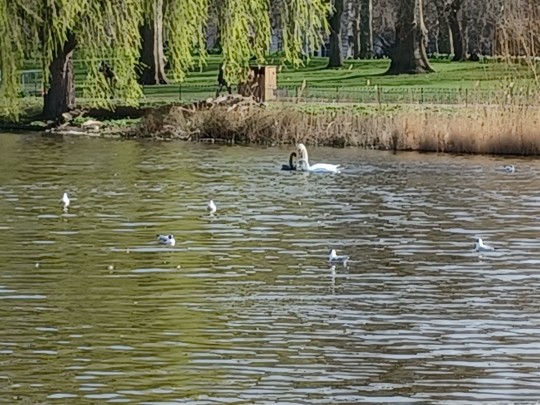
6 notes
·
View notes
Text
Mythology Inspired Names: Egyptian (masc)
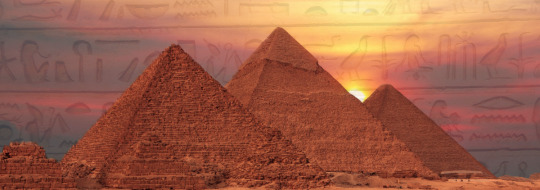
Amun ~ Egyptian, meaning "the hidden one."
A primordial god, Amun is associated with the hiddenness of the universe and the unseen aspects of it. He is also considered at times as the king of the gods.
pronunciation: ahh-mun
Anhur ~ Egyptian, meaning "sky bearer."
Anhur is a war god and patron of the army. The personification of royal warriors, Anhur also defended Ra from the evil serpent Apep.
pronunciation: ahn-her
Anubis ~ Egyptian, meaning "time," "to swathe," "to decay."
Anubis is the god of funerary rites, protection of the grave, and also acts as the guide for many souls in the Underworld. Also associated with twilight and dawn, Anubis facilitates the weighing of the heart, which determines if a soul will move into the afterlife or be devoured.
pronunciation: eh-nuu-bis, ah-nuu-bis
Aqen ~ Egyptian, meaning "trustworthy."
Not much is known of Aqen. He is a god of the Underworld who drove a Meseket (boat) of papyrus that guided souls into the Duat. He sleeps until he is needed, and is the Protector of the Dead.
pronunciation: ahh-ken, iah-ken
Ash ~ Egyptian, also called "Lord of Libya."
The god of oases, Ash was particularly associated with Saqqara. He is also known as the protector of the western desert, and of the vinyards on the western Nile delta.
pronunciation: ash, ahsh
Baal ~ Egyptian, also spelled "Ba'al."
Originally a Syrian god adopted by Egypt. A minor deity, Baal was associated strongly with storms and fertility, as well as the ownership of land and lordship.
pronunciation: bai-ahl, bah-ahl
Bennu ~ Egyptian, meaning "heron," "phoenix."
A deity linked with the sun, rebirth, and creation, Bennu is thought to be the original inspiration for the Ancient Greek myth of the phoenix.
pronunciation: ben-noo, bin-noo
Bes ~ Egyptian, meaning "secret," "protection," "warrior."
Usually depicted as a dwarf, Bes is the patron of the household, childbirth, children, and mothers. Generally known for making children laugh with funny faces, and scaring demons away with frightening faces.
pronunciation: beh-s, bee-s
Ennead ~ Egyptian, originally Greek meaning "the nine."
The Great Ennead are the nine deities of Ancient Egyptian faith worshipped at the major city of Heliopolis. They are Atum, Shu, Tefnut, Geb, Nut, Osiris, Isis, Set, and Nephthys.
pronunciation: ehn-nee-id
Geb ~ Egyptian, meaning "earth."
The Ancient Egyptian god of the earth, Geb is the father of snakes and caused earthquakes with his laughter. He's also the one who allows crops to grow.
pronunciation: geh-b, keh-b
Hapi ~ Egyptian, meaning "Nile."
Hapi is the (sometimes intersex) god of the Nile. He oversaw its flooding every year which created fertile soil from which crops could grow.
pronunciation: hah-pii
Heka ~ Egyptian, meaning "magic," "living magic."
Largely the Egyptian god of magic, he is also associated with medicine. He battled a pair of snakes, which then became the symbol of his power.
pronunciation: heh-kah
Horus ~ Egyptian, meaning "falcon," "he who is the day."
God of the sky, justice, and victory, Horus is known for protecting his father, Osiris, who had been killed by Set. Horus would grow to battle Set to avenge his father.
pronunciation: hor-us
Imhotep ~ Egyptian, meaning "one who comes in peace."
Largely considered the father of medicine to the Ancient Egyptians, Imhotep brought sleep to those who were sick and suffering. Also the name of an Egyptian chancellor deified after his death.
pronunciation: eem-hoh-tep
Khonsu ~ Egyptian, meaning "he who travels."
Largely known as the god of the moon (specifically the new moon), Khonsu also aids in healing and protection from wild animals. It is said he watched over travelers in the night.
pronunciation: kh-ohn-suu, kh-on-suu
Maahes ~ Egyptian, meaning "fierce lion," "he who is true beside her."
Maahes is a war god with a lion head. Largely the devourer of the wicked and protector of the innocent, he also came to be associated with storms and darkness.
pronunciation: mah-hes, mai-hes
Medjed ~ Egyptian, meaning "the smiter," "strike."
A minor god mentioned in The Book of the Dead, Medjed has a ghostly appearance. He is mostly invisible, but shoots light from his eyes.
pronunciation: mah-jed, mahd-jed, meh-jed
Mehen ~ Egyptian, meaning "the coiled one."
Mehen is a serpent who coils around himself and eats his own tail, representing rebirth, the cycle of life, and renewal. He is a shield against the forces of evil. An Ancient Egyptian Ouroboros.
pronunciation: mey-hen, mah-hen
Min ~ Egyptian, meaning "monuments."
The god of rain and the eastern desert region, Min protected caravans on their way to the Red Sea. He is also the god of miners and prospectors.
pronunciation: mii-n, mih-n, meh-n
Nefertem ~ Egyptian, meaning "beautiful one who closes."
Nefertem is the god of perfume, healing, primordial water, aromatherapy, and rebirth. He is mostly represented with a lotus flower.
pronunciation: neh-fur-tehm
Osiris ~ Egyptian, meaning "he of the throne."
Osiris is the Ancient Egyptian god of the dead, resurrection, and the afterlife. His wife is Isis and his son is Horus. Osiris is usually depicted with green skin and is one of the most important gods in the Ancient Egyptian faith.
pronunciation: oh-sai-rihs
Ra ~ Egyptian, meaning "sun."
The Ancient Egyptian god of the sun, Ra is also the father of many other deities. Specifically associated with the midday sun, when light is at its highest, Ra is one of the most important Egyptian deities.
pronunciation: rah
Ren ~ Egyptian, meaning "name."
The Ancient Egyptians believed there were many parts that made up the soul, one of which was the "ren," or the true name. The true name was essential to a soul maintaining its identity after death. pronunciation: rehn
Sah ~ Egyptian, meaning "Orion," "Orion constellation."
Sah is a god who represents the stars of the Orion and Lepus constellations. In some Old Kingdom texts he is referred to as "the Father of the Gods."
pronunciation: sah
Serapis ~ Egyptian, meaning "bull," also spelled "Sarapis."
A Graeco-Egyptian god, Serapis was associated with the city of Alexandria and the library there. He often replaced Osiris as the consort of Isis in the Ptolemaic period.
pronunciation: sehr-ah-pihs
Set ~ Egyptian, potentially meaning "overpowering," "to desert." Some Egyptologists believe the true meaning has been lost. Also spelled as "Seth."
Set is the god of violence, storms, disorder, chaos, hostility, and war. Set killed Osiris out of jealousy and is regarded as the betrayer, as well as the balance and foil to Horus.
pronunciation: seh-t, seh-th
Shai ~ Egyptian, meaning "fate."
The deification and personification of fate in Ancient Egyptian mythology. Shay has been depicted as both male and female. pronunciation: shah-ee, shy, sh-ai
Shu ~ Egyptian, meaning "he who ascends," "he who rises."
He is the god of wind, air, fog, and clouds. He is considered a calm god and is essential to the perserverance of life by keeping Geb (earth) and Nut (cosmos, sky) apart.
pronunciation: sh-oo
Sia ~ Egyptian, meaning "to know," "to perceive," also spelled as "Saa."
The deification of perception, Sia embodies wisdom, insight, and reason. He helps guide the sun over the night into its rebirth at dawn.
pronunciation: see-ah, sigh-ah
Sobek ~ Egyptian, also spelled "Sebek."
Sobek is the crocodile-headed god of power and military prowess. He is also associated with fertility and pharaonic power. He was often invoked to help protect against dangers presented by the Nile River.
pronunciation: soh-behk

These name lists are intended to help writers and artists. There is no expectation of credit, and these lists aren't meant to be the end-all be-all lists of possible names. There are millions out there, and this is just for fun!
If you have a suggestion for a name list, or want to see something specific, feel free to submit a request!
And if you see something that is wrong (a pronunciation, a meaning, an origin), again, feel free to let me know!
#writeblr#writing reference#writing resources#writing related#writing research#name list#name suggestions#name ideas#character names#character name list#male names#male name ideas#boy names#boy name ideas#ancient egypt#ancient egyptian mythology#ancient egyptian influence#ancient egyptian inspired
10 notes
·
View notes
Photo
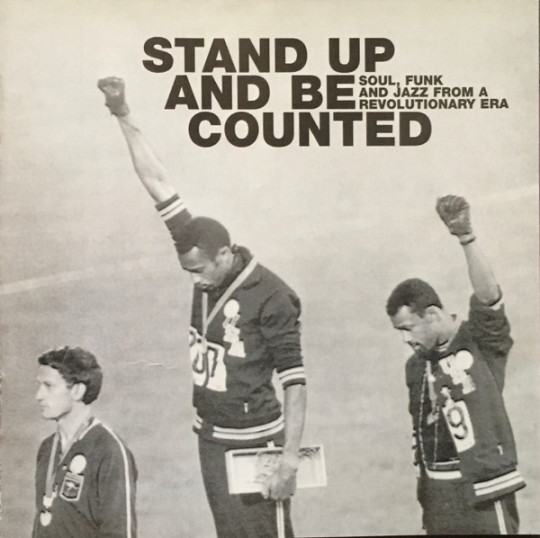

Today’s compilation:
Stand Up and Be Counted: Soul, Funk and Jazz from a Revolutionary Era
1999
Funk / Soul / Spoken-Word Poetry / Jazz
Today's an important history lesson, folks. I went back to a late 60s/early 70s era of US black revolutionary politics and awareness with this CD that was put out by UK label Harmless in '99. It's those pre-disco days when a lot of black-made music was politically righteous, with scathing lyrical critiques of a still racially unequal status quo, and carried poignant, urgent, and inspirational messages that would help to raise the consciousness among black folks nationwide, as well as anyone else who was willing to listen and learn. It was a time of riotous and fiery tumult, and while this release doesn't seem to fully encapsulate or present all the most prominent songs and musicians that ended up providing the soundtrack for this very volatile handful of pivotal years—where's Sly Stone?—it's still a phenomenal album.
This CD comes with fixtures you'd expect on a release like this: James Brown's "Say It Loud - I'm Black and I'm Proud," Nina Simone's "I Wish I Knew How It Would Feel to Be Free," and perhaps the most iconic piece of spoken-word poetry that's ever been recorded, Gil Scott-Heron's "The Revolution Will Not Be Televised." Basically, if you're putting together an album that's trying to reflect the American black struggle from this specific time period, it'd be prudent to include this particular trio of songs.
But where this album truly shines is with its overwhelming majority of selections that aren't so obvious; songs that contain the same hunger and zeal for equality, but aren't as well known to a general audience. For example, The Last Poets, a spoken-word poetry trio whose early 70s pining for immediate revolution on their self-titled debut album would lay the foundation for the creation, development, and emergence of hip hop music and culture. Their song, "When the Revolution Comes," actually sparked a response from Gil Scott-Heron with "The Revolution Will Not Be Televised," and 22 years after its initial release, a repeated line towards the end of the song would find itself repurposed as the title of The Notorious B.I.G.'s debut single, "Party and Bullshit."
And also on here is a solo track from one of those Last Poets as well, Gylan Kain, whose 1970 song, "Loose Here," off of his debut LP, The Blue Guerrilla, was actually co-written by none other than the legend Nile Rodgers himself, earning him one of his first ever credits, long before he'd *really* break out with a pair of #1s on the disco tip in '78 and '79, with Chic's "Le Freak" and then "Good Times."
Truth be told, though, The Last Poets weren't actually as obscure as you may think that I might be making them out to be here; their debut album managed to sell over 350,000 copies, and it peaked at #29 on Billboard's 200 album chart, and #3 on R&B as well. It's just that, knowing about them was spread pretty much purely through word of mouth; there was certainly no big commercial engine that was driving their sales, and if you weren't black and didn't have your ears tuned to any of this sound, the likelihood that you'd catch wind of them was pretty low.
So, the most obscure song on this album, then, appears to be a funk tune from an anonymous group called The Pace-Setters, whose only ever release, a 1971 7-inch, sings the praises of social activist Jesse Jackson and his then-recently formed PUSH organization on its chugging a-side.
The rest of this CD's tunes are pretty much made up of brilliant funk, soul, and jazz entities—The Impressions, Billy Paul, Archie Shepp, and ex-Temptation Eddie Kendricks—but the album doesn't use any of their singles. All the choices are still terrific, however, especially Kendricks' "My People... Hold On," the slow, earthy, heartfelt, and mantric title track off of his 1972 sophomore album. Interestingly, the name of that album, though, actually chops off the "My" in "My People," suggesting that Motown imprint Tamla didn't want to potentially alienate any parts of its audience with such a transparent appeal to black pride and solidarity 🤔.
Another well-known group on this album is James Brown's former one, The Famous Flames, who are just credited as The Flames here. And as The Flames, they never released an album, but did put out a handful of singles, including this CD's title track, which lives up to the name of the group who made it (it's scorching!), and was produced by James Brown and released on his own label, People, in 1971.
And before I close out, I gotta mention Chicago jazz ensemble The Pharaohs too, because the penultimate track from their 1971 debut album, The Awakening, makes for a tremendous song, with astonishing traded leads between saxophone and guitar, and a constantly thick amount of busy backing behind it all as well. It would still be an amazing tune, even if it didn't have any kind of messaging to go along with it.
So, in sum, Stand Up and Be Counted is an incredible release. It really channels a very important few years of palpably churning American black fervor, and it includes some unforgettable all-timers too, but its real uniqueness is found in its many selections of non-singles, deep cuts, & relative obscurities. I really don't think you'll ever find another late 60s/early 70s black empowerment retrospective that's quite like this one here. A stunningly superb and authentic collection of tunes.
Highlights:
The Flames - "Stand Up and Be Counted"
Gil Scott-Heron - "The Revolution Will Not Be Televised"
The Impressions - "Mighty Mighty (Spade and Whitey)"
Billy Paul - "East"
Mike James Kirkland - "Hang On in There"
James Brown - "Say It Loud, I'm Black and I'm Proud, Parts 1 & 2"
The Last Poets - "When the Revolution Comes"
Pace-Setters - "Push on Jessie Jackson"
Archie Shepp - "Blues for Brother George Jackson"
Eddie Kendricks - "My People... Hold On"
The Pharaohs - "Freedom Road"
Kain - "Loose Here"
Nina Simone - "I Wish I Knew How It Would Feel to Be Free"
#funk#soul#soul music#spoken word#poetry#poems#jazz#music#60s#60s music#60's#60's music#70s#70s music#70's#70's music
17 notes
·
View notes
Note
I know the musical version is coming out soon but who would you recast in a non-musical mean girls? 🤍🤍🤍🤍
Ah, fun! I kind of feel like the magic of the original Mean Girls is impossible to duplicate (which certainly uhhh, seems to be the case with the new musical trailer - and I say that as someone who loves musicals!) It's such a product of its time in many ways, but it's always fun to try and envision how these things could be updated, and y'know, I love fancasting stuff, haha. SO!
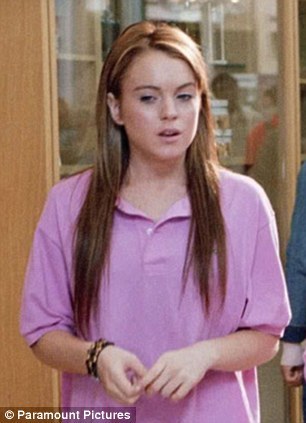
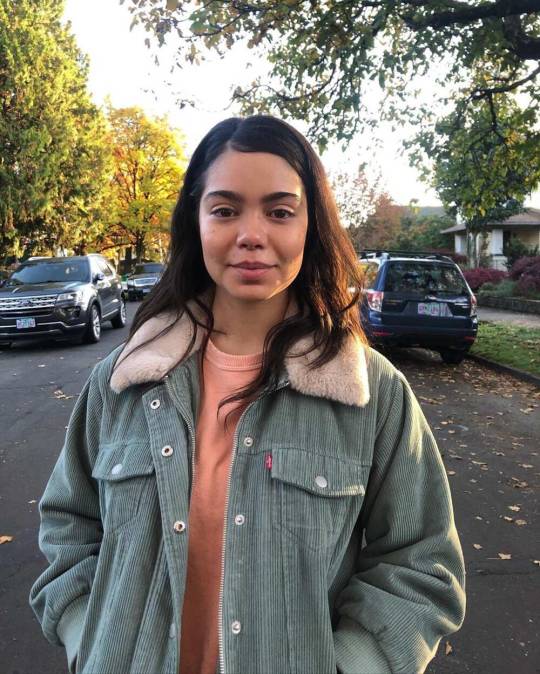
Auli'i Cravalho as Cady Heron.
I was genuinely thrilled when I read that Auli'i had been cast in the new movie musical version, but it was a bit of a record scratch when I learned she'd been cast as Janis? I think she's a pretty versatile and extremely personable actress, and to me, that's really what the role of Cady needs as she's the character who has the most interesting evolution/devolution across the course of the movie. Not casting her as the lead I think was a real misfire, and I say that as someone who quite likes Angourie Rice.


Ruby Cruz as Janis Ian.
Whereas I kinda think Ruby Cruz would be perfect as Janis. She's got the look and the energy and I think has the right amount of vulnerability and acidity to play her really well.
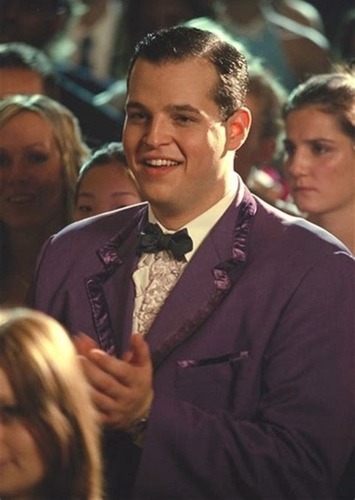
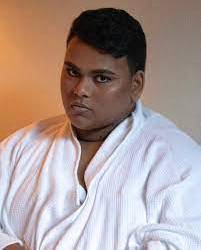
Luke Islam as Damien Leigh.
I saw Theater Camp a few weeks ago, and man, Luke Islam was just so much fun in it. I haven't seen him in anything else (I believe he's in the Mighty Ducks reboot which is delightful), but even just from Theater Camp he has the energy, the attitude and the right amount of camp to kill it.
Aaron Samuels and the Plastics under the cut!

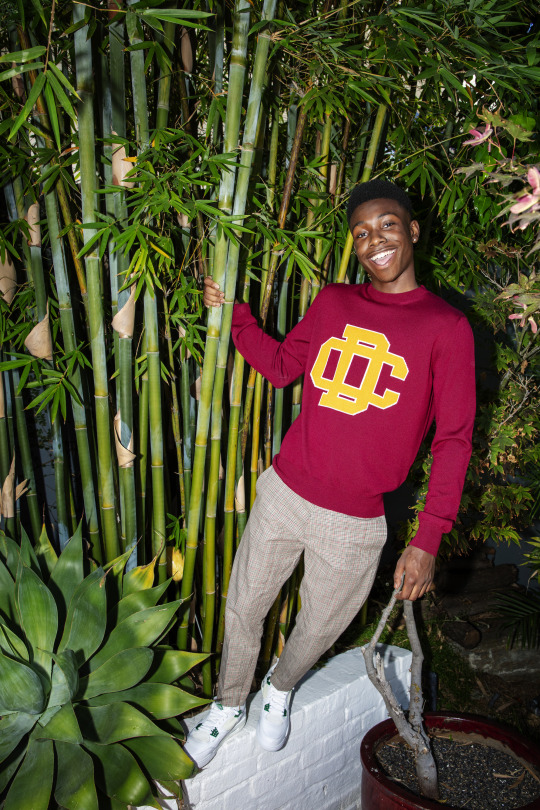
Niles Fitch as Aaron Samuels
I think I might have recast someone else with Niles Fitch before, haha, but I just think he's really charming in that all-American-boy way that Aaron Samuels kind of embodies.


Diana Silvers as Regina George.
One of the things that's kind of getting to me about the trailer for the musical remake is the fact that it seems like they've made Regina more of an outward bully whereas one of the things that I think the original movie did so well was the way Regina was a lot more insidious about the way she managed her own popularity and her relationships? Anyway, I think Diana could do that really well! She has a bit of that sort of tone in Booksmart, and I think is good in Ma and Glass too, so a role like this could be a good opportunity to stretch her skills.
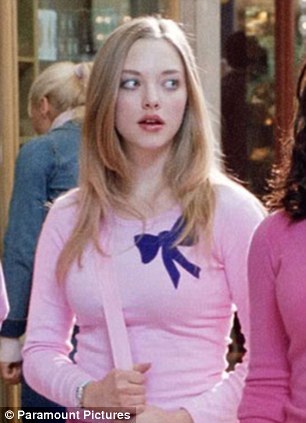

Meg Donnelly as Karen Smith.
I kinda feel like Meg Donnelly's career has stalled because she's probably up for the same roles as Kathryn Newton, which is a bit of a bummer because I think Meg Donnelly's a pretty solid comedic actress with a lot of charisma on screen. She really sold the ditzy daughter role in American Housewife, and I think she could pretty much walk into Karen and play her really well. Her style's just different enough from Amanda's too that hopefully she'd bring something fresh to the role too.

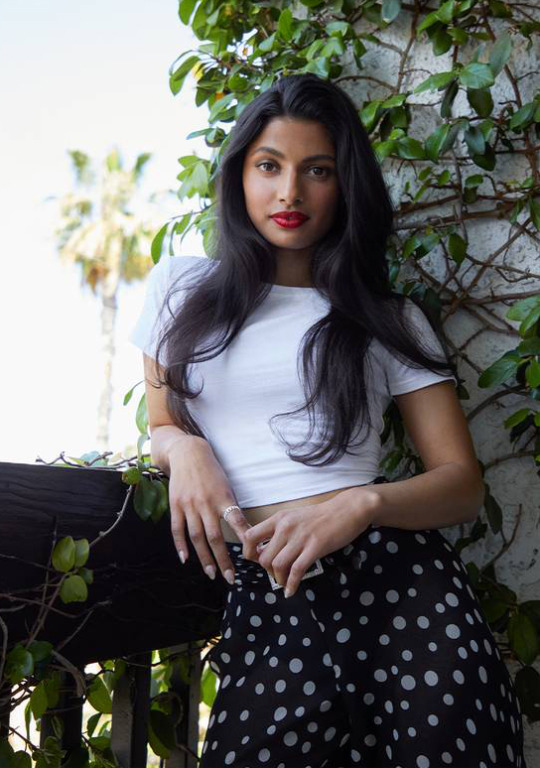
Priya Kansara as Gretchen Wieners.
Fun fact, Gretchen's actually my favourite Mean Girls character. I love a girl who straddles the line between uptight and unhinged, and she just does it so well! As does Priya in Polite Society! I love her a lot, and think she could make Gretchen her own.
#somewhere in the depths of livejournal are a few gretchen x regina fics i wrote haha#there was some really good wlw fics in that fandom for a minute#i read#so many of them#haha#recastings#welcome to my ama
2 notes
·
View notes
Text
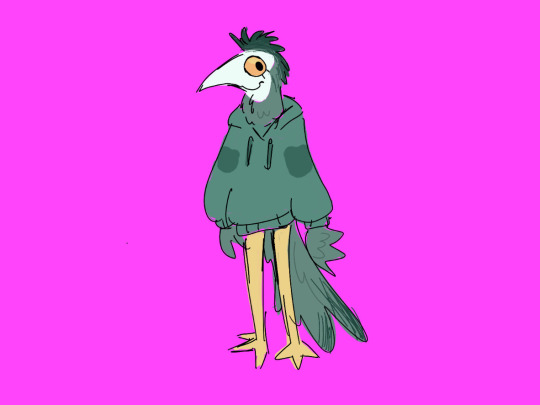
They turned my boy into a cartoon character
4 notes
·
View notes
Note
Do yu know what other animals were in ancient egypt? I want my oc to have a unique animal and you seem to know a fair amount

I am a well of ridiculous, hyperspecific, only interesting to some trivia lmao.
I would encourage you not to limit yourself to an entirely unique beast- many deities share sacred animals and are still strong individuals. My mind immediately goes to the huge number of feline deities- lions and lionesses in particular- for an example. Additionally, it's nigh impossible for me (with no academic anthropology/egyptology/historic zoology knowledge) to say for certain that particular animals were present in Kemet when they have no documented deities, mummies, or written mentions. I've had to guess for some, deduce by their present day habitats and more or less "timeline" of their species.
It's also important to keep in mind Kemet had contact with other civilizations in other habitats, meaning they were aware of animals not necessarily native to the area. A perfect example is the Hamadryas baboon- they were Nubian animals, but were sacred to both Thoth and Babi, depicted in art, and many mummies of the species have been recovered. A more surprising example is the Syrian brown bear, which was a rare exotic spectacle for the royal elite. There's also the trouble of many species now being extant from the area, meaning they were there but the local population is now extinct- the African sacred ibis is the example my mind comes to first, the waterfowl no longer present along the Nile.
Coincidentally, I've been compiling a list of animals for my own reference to supply a beast or two for the deities that don't have one in tradition.

Birds
Abdim's Stork
African Darter
African Dwarf Kingfisher
African Grass Owl
African Open-billed Stork
African Pied Wagtail
African Sacred Ibis
Asian Green Bee-Eater
Barbary Falcon
Barbary Partridge
Barn Owl
Barn Swallow
Bearded Vulture
Bennu Heron (likely not an actual animal, the Bennu bird inspired by the Goliath Heron- but felt like including it anyhow)
Black Kite
Black Stork
Black-throated Loon
Black-winged Kite
Brown-necked Raven
Carrion Crow
Cattle Egret
Chukar Partridge
Common Buzzard
Common Cormorant
Common Crane
Common Greenshank
Common House Martin
Common Kestrel
Common Kingfisher
Common Pochard
Common Quail
Common Raven
Common Redshank
Common Redstart
Common Sandpiper
Common Spoonbill
Common Teal
Crab Plover
Crested Plover
Dalmatian Pelican
Demoiselle Crane
Eagle (I'm sure there were some, but I can't find any definitive evidence of species in the ancient Kemetic culture- I would take a guess that the Golden Eage was an infrequent visitor)
Egyptian Plover
Egyptian Vulture
European Roller (considered a pest)
European Turtle-dove
Eurasian Coot
Eurasian Crag Martin
Eurasian Teal
Eurasian Wigeon
Fan-tailed Raven
Ferruginous Duck
Gadwall
Garganey
Glossy Ibis
Golden Oriole
Goliath Heron
Great Bittern
Great Bustard
Great Cormorant
Great Egret
Great Spotted Cuckoo
Great White Pelican
Greater Flamingo (possibly not native)
Green Sandpiper
Grey Heron
Griffon Vulture
Helmeted Guineafowl (not native)
Hermit Ibis
Hobby Falcon
Honey Buzzard
Hooded Crow
Hoopoe
Houbara Bustard
House Crow
House Sparrow (pest, hieroglyph had negative connotation)
Kittliz's Plover
Lanner Falcon
Lappet-faced Vulture
Laughing Dove
Lesser Kestrel
Lesser Pied Kingfisher
Little Bittern
Little Bustard
Little Egret
Little Owl
Long-eared Owl
Long-legged Buzzard
Mallard
Marabou Stork
Marsh Sandpiper
Masked Shrike
Merlin
Mourning Wheatear
Northern Lapwing
Northern Pintail
Northern Shoveler
Ostrich
Pale Crag Martin
Peregrine Falcon
Pied Avocet
Pink-backed Pelican
Purple Gallinule
Purple Heron
Red Kite
Red-backed Shrike
Red-footed Falcon
Red-rumped Wheatear
Reed Cormorant
Ring-necked Dove
Rock Dove
Rook
Ruddy Shelduck
Saddle-bill Stork
Saker Falcon
Sandhill Crane
Sand Martin
Sand Partridge
Short-eared Owl
Spotted Redshank
Sooty Falcon
Squacco Heron
Striated Heron
Swan (not native)
Tawny Owl
Tufted Duck
Western Reef Heron
White-backed Night Heron
White-crowned Wheatear
White Stork
White Wagtail
Wood Sandpiper
Yellow-billed Stork
Mammals
Aardvark (possibly not native)
Aardwolf
Addax Antelope
African Clawless Otter
African Giant Shrew
African Green Monkey (not native)
African Grass Rat
African Leopard
African Striped Weasel
Arabian Oryx
Barbary Deer (not native)
Barbary Lion (now extinct)
Barbary Macaque (not native)
Black Rat
Common Patas Monkey (not native)
Black Rhinoceros
Blanford's Fox
Black Wildebeest
Bubal Hartebeest (now extinct)
Cairo Spiny Mouse
Cape Hare
Caracal
Cheetah
Common Beisa Oryx
Common Genet
Desert Hedgehog
Desert Long-eared Bat
Dorcas Gazelle
Desert Black Cobra
Egyptian Fruit Bat
Egyptian Jackal/African Wolf (originally misidentified, now the African Wolf)
Egyptian Mongoose
Egyptian Pipistrelle
Egyptian Red Fox
Egyptian Slit-faced Bat
Egyptian Tomb Bat
Egyptian Weasel
Egyptian Wild Ass
Fennec Fox
Flower's Shrew
Four-toed Jerboa
Geoffroy's Horseshoe Bat
Gerenuk
Giraffe
Golden Spiny Mouse
Greater Egyptian Jerboa
Greater Mouse-tailed Bat
Greater Red Musk Shrew
Hamadryas Baboon (not native)
Hippopotamus
Honey Badger
House Mouse
Lesser Egyptian Jerboa
Lesser Mouse-tailed Bat
Long-eared Hedgehog
Long-nosed Shrew
North African/Bush Elephant (vilified and driven out by prehistoric Egyptians)
North African Crested Porcupine (not native)
Nubian Ibex (not native)
Olive Baboon (likely not native, sometimes called the Anubis Baboon)
Persian Fallow Deer (not native)
Rhim Gazelle
Rüppell's Fox
Sand Rat
Serval (likely not native, but Ra was depicted as one)
Scimitar Oryx
Soemmerring's Gazelle
Somali Dwarf Shrew
Spotted Hyena
Spotted-necked Otter
Striped Hyena
Syrian Brown Bear (not native)
Wild Boar
White Rhinoceros
Yellow Baboon (not native, species' epithet means 'dog-head' in Greek)
Vervet Monkey
Reptiles
African Chameleon
African Rock Python
Arabian Horned Viper
Desert Horned Viper
Desert Monitor Lizard
Egyptian Cobra
Egyptian Gecko
Egyptian Sand Boa
Egyptian Sand Racer
Egyptian Tortoise
Javelin Sand Boa
Insects/Arachnids/Etc.
Nile Crocodile
Nile Soft-shelled Turtle
Red Spitting Cobra
Saharan Sand Viper
Amphibians
African Common Toad
European Green Toad
Marsh Frog
Mascarene Grass Frog
Nile Delta Toad
Nile Valley Toad
Camel Spider
Banded Garden Spider
Brown Widow Spider
Carpenter Ant
Centipede
Click Beetle
Common Housefly (NOT considered a pest, actually revered as a protector)
Danaid Eggfly
Desert Ant
Desert Locust
Devil's Coach Horse Beetle
Dorippus Tiger Butterfly
Dragonfly
Flea
Fire Ant
Jewel Beetle
Gaudy Commodore Butterfly
Half-edged Wall Jumping Spider
Large Salmon Arab Butterfly
Maggot/Carrion Fly
Migratory Locust
Messor Ant
Millipede
Red-breasted Goose
Mosquito (pest)
Moths in the Saturniidae family
Palestine Yellow Scorpion
Pantropical Jumping Spider
Pharaoh Ant
Plain Tiger Butterfly
Praying Mantis
Scarab Beetle
Sinai Baton Blue Butterfly
Southern White Admiral Butterfly
Scorpions in the Buthidae and Scorpionidae families
Water Scorpion
Fish, Mollusks, etc. (Keep in mind fish were taboo in Kemet)
Abju
African Catfish
African Tigerfish
Bayad Fish
Blacktip Shark
Blue-spotted Stingray
Bolti
Chromis
Cichlid
Cornish Jack
Eel
Flatfish
Gilt-head Bream
Great Barracuda
Leopard Shark
Lepidotus Fish
Loligo Squid
Lungfish
Moon Fish
Mullet
Nile Barb
Nile Bichir
Nile Carp
Nile Mormyrid
Nile Labeo
Nile Perch
Nile Puffer
Parrotfish
Reef Manta Ray
Reef Shark
Sandbar Shark
Sea Snake
Scorpionfish
Spiny Lobster
Sturgeon
Surgeonfish
Swordfish
Thornback Ray
Thresher Shark
Tiger Shark
Tilapia
Triggerfish
Unicorn Fish
Wrasse
Zebra Shark
Domestic Animals
Bean Goose
Brant Goose
Camel (not introduced until Middle/New Kingdom)
Cats (Mau breed)
Chickens (not introduced until New Kingdom era)
Cow/Bull
Dogs (Saluki, Greyhound, Basenji, and Pharaoh Hound breeds)
Donkey
Egyptian Goose
Greater White-fronted Goose
Greylag Goose
Honey Bees
Horse (not introduced until New Kingdom)
Pig
Ram
My sources, if you're interested, are the Wikipedia page for Egyptian wildlife, a few different diving sites about the Mediterranean and Red Sea, a couple books I own on Ancient Egypt that describe the geography of the periods, and this lovely reddit multi-post
Sheep
13 notes
·
View notes
Text
It is said that the myth of the Phoenix was taken from the Egyptian tradition, from the mythological bird Bennu. This bird is associated with the solar cult of Heliopolis (the City of the Sun). It was depicted in Egyptian art as a heron. It was also associated with the flooding of the Nile and creation.

The myth of the phoenix has various origin theories. Some scholars believe it may have originated from Egyptian mythology, associated with the bird Bennu or the Benu bird mentioned in the Book of the Dead. The Greeks also have a rich tradition around the phoenix, describing it as a symbol of renewal and associating it with the sun god. The phoenix is commonly depicted as a radiant, magnificent creature that could live for centuries before being reborn in a burst of flames. It continues to capture the imagination in modern fantasy stories.
#AIartistry#RobotImagery#DigitalMindArt#NeuralAesthetic#CyberneticVisions#AlgorithmicArtistry#VirtualArtistry#MachineLearningVisions#ComputationalCreation#SyntheticImageCulture#midjourney#abstract#digitalartistr#color#light#illustration
2 notes
·
View notes
Text
Egyptian Deities
Male
Aker – A god of the earth and the horizon
Amun – A creator god, patron deity of the city of Thebes, and the pre-eminent deity in Egypt during the new kingdom
Anhur – A god of hunting and war
Anubis – God of the dead. Carries the dead to the judgement place of the underworld
Aten - sun disk deity who became the focus of the monolatrous or monotheistic antenist belief system in the reign of Akhenaten
Atum – A creator god and solar deity, first god of the Ennead
Bennu – A solar and creator deity, depicted as a heron
Geb – An earth god and member of the ennead
Hapi – Personification of the Nile flood
Horus – A major god, usually shown as a falcon or as a human child, linked with t he sky, the sun, kingship, protection and healing. Often said to be the son of Osiris and Isis
Khepri – A solar creator god, often treated as the morning form of Ra and represented by a scarab beetle
Khnum (Khnemu) – A ram god, the patron god of Elephantine, who was said to control the Nile flood and give life to gods and humans
Khonsu – A moon god, son of Amun and Mut
Maahes – A lion god, son of Bastet
Montu – A god of war and the sun, worshipped at Thebes
Nefertum – God of the lotus blossom from which the sun god rose at the beginning of time. Son of Ptah and Sekhmet
Nemty – Falcon god, worshipped in middle Egypt, who appears as a ferryman for the greater gods
Neper – A god of grain
Osiris – God of death and resurrection who rules the underworld and enlivens vegetation, the sun god, and deceased souls
Ptah – A creator deity and the god of craftsmen, the patron god of Memphis
Ra – The sun god
Set – An ambivalent god, characterized by violence, chaos and strength, connected with the desert. Mythological murderer of Osiris and enemy of Horus, but also a supporter of the king
Shu – Embodiment of wind or air, a member of the ennead
Sobek – Crocodile god, worshipped in the faiyum and at kom ombo
Sopdu – A god of the sky and of egypts eastern border regions
Thoth – A moon god, and a god of writing and scribes, and patron deity of Hermopolis
Wadj-wer – personification of the Mediterranean sea or lakes of the Nile delta
Female
Amunet – Female counterpart of Amun and a member of the ogdoad
Anuket – A feathered headdress wearing goddess of egypts southern frontier regions, particularly the lower cataracts of the Nile
Bastet – Goddess represented as a cat or lioness, patroness of the city of bubastis, linked with protection from evil
Bat – Cow goddess from early in Egyptian history, eventually absorbed by hathor
Hathor – One of the most important goddesses, linked with the sky, the sun, sexuality and motherhood, music and dance, foreign lands and goods, and the afterlife. One of many forms of the eye of Ra
Hatmehit – Fish goddess
Heqet – Frog goddess said to protect women in childbirth
Hesat – A maternal cow goddesses
Imentet – An afterlife goddess closely linked with Isis and Hathor
Isis – Wife of Osiris and mother of Horus, linked with funerary rites, protection, motherhood and magic. She became a major deity in Greek and Roman religion
Maat – Goddess who personified truth, justice and order
Menhit – A lioness goddess
Mut – Consort of Amun, worshipped at Thebes
Neith – A creator and hunter goddess, patron of the city of Sais in lower Egypt
Nekhbet – A vulture goddess, the tutelary deity of upper Egypt
Nephthys – A member of the ennead, the consort of Set, who mourned Osiris alongside Isis
Nepit – A goddess of grain, female counterpart of Neper
Nut – A sky goddess, member of the ennead
Pakhet – A lioness goddess mainly worshipped in the area around beni hasan
Renenutet - An agricultural goddess
Satet – A goddess of egypts southern frontier regions
Sekhmet – A lioness goddess, both destructive and violent and capable of warding off disease, protector of the pharaohs who led them in war, the consort of Ptah and one of many forms of the eye of Ra
Tefnut – Goddess of moisture and a member of the ennead
Wadjet – A cobra goddess, the tutelary deity of lower Egypt
Wosret – A goddess of Thebes
Both male and female forms
Anubis/Anput – The god/goddess of embalming and protector of the dead
Heh – Personification of infinity and a member of the ogdoad
Kek – The god of chaos and darkness, as well as being the concept of primordial darkness. Kek’s female form is known as Kauket
Nu- Personification of the formless, watery disorder from which the world emerged at creation and a member of the ogdoad
Ra – The foremost Egyptian sun god, involved in creation and the afterlife. Mythological ruler of the gods, father of every Egyptian king, and the patron god of Heliopolis
Tatenen – Personification of the first mound of earth to emerge from chaos in ancient Egyptian creation myths
39 notes
·
View notes
Photo
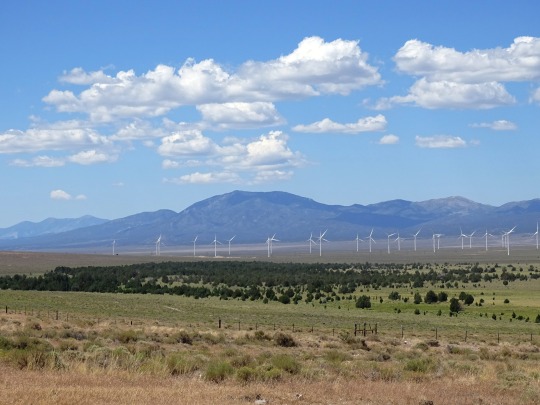

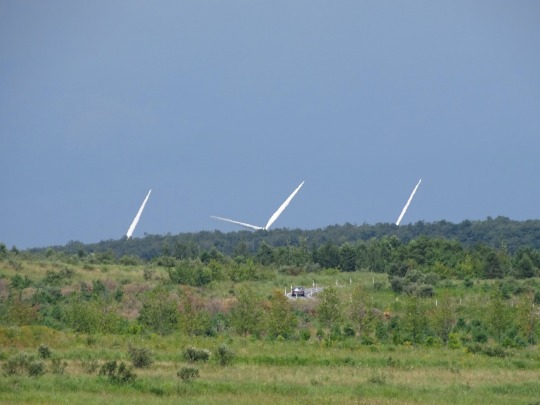

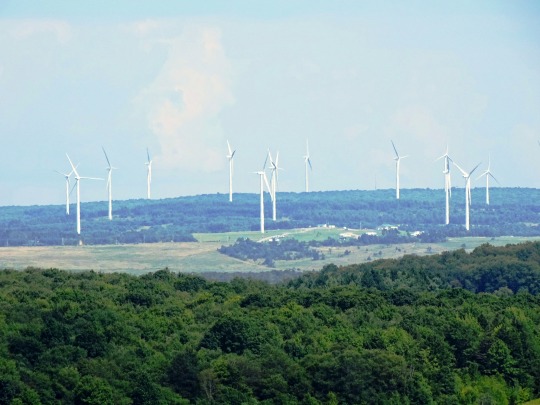
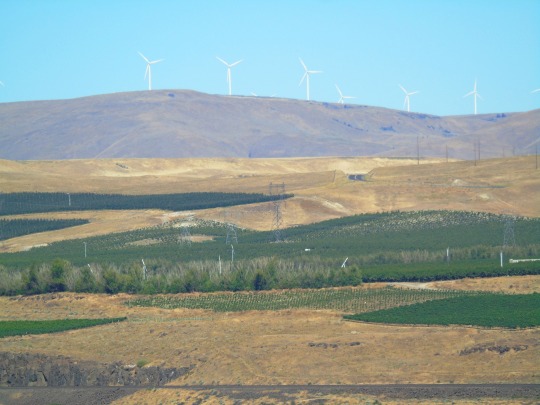

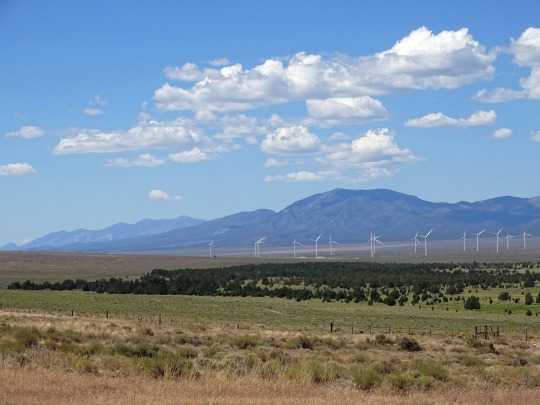
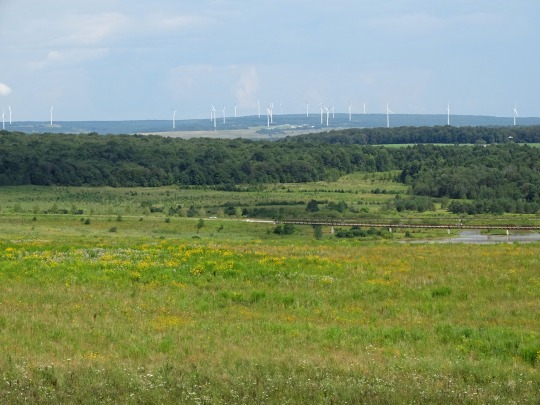

Global Wind Day
Global Wind Day is celebrated on June 15 every year. It’s an international event to raise awareness regarding the importance of wind energy and the power it holds to change the world, improve energy systems, and decarbonize economies. Investing in wind energy means spending less money on fossil fuel imports, resulting in a smaller carbon footprint and minimized CO2 for cleaner air on our planet. On this day, we learn not just about how wind power leads to a greener planet, but also about job creation and employment opportunities for many people.
History of Global Wind Day
The history of wind energy as a power source traces back thousands of years. As early as 5,000 B.C., Egyptians had already been using wind power to propel their boats on the Nile River. This was improved upon by the Chinese in 200 B.C. as they invented wind-powered water pumps. Furthermore, people from the Middle East and Persia discovered windmills with woven-reed blades to grind grain with more speed and less manpower, which eventually led to more efficient food production.
It wasn’t until the 1st century A.D. that Heron of Alexandria created the windwheel. According to historians, this was the first recorded wind-driven wheel to power a machine. It included a small windmill that powered a piston that forces air through the organ pipes. According to records, it made a sound like that of a flute.
In the Middle Ages, windmills became a popular device in Pakistan, Afghanistan, and Iraq. They were used to pump water and grind sugarcane, which eventually boosted their grist milling industry. This technology was ultimately brought to Northwestern Europe in 1180 and became a popular tool to grind flour — a system that still exists up to date.
In the late 1800s and early 1900s, colonists brought windmills to the United States. Homesteaders and ranchers installed thousands of water pumps and small wind-electric generations in Western America.
The possibilities of wind power were further explored due to oil shortages in the 1970s. This forced everyone to find an alternative source of energy to generate electricity. Due to this scarcity, the U.S. federal government installed thousands of wind turbines in California to encourage the use of renewable energy sources. By 2020, the U.S. share of electricity generation via wind power grew to 8.4% — a huge spike compared to the 1990s 1%.
Global Wind Day timeline
1st Century A.D. The First Wind-Powered Machine
Greek engineer Heron of Alexandria discovers the first wind-driven wheel that powers a machine.
1180s Vertical Windmills
Northwestern Europe uses vertical windmills to grind flour.
1900s 2,500 Windmills Reaches 30 Megawatts
About 2,500 windmills in Denmark produce a combined power of 30 megawatts used to grind grains and pump water.
1970s Global Oil Shortage
The global oil shortage leads people to explore wind energy in a more advanced manner to be an alternative to electricity.
1980s Wind Turbines in California
The U.S. Federal Government installs thousands of wind turbines in California in support of renewable energy sources.
Global Wind Day FAQs
What are the types of wind energy?
The three main types of wind energy are utility-scale wind, offshore wind, and distributed wind.
What are four manufacturers in the world that uses wind turbines?
Vestas (Denmark), Siemens Gamesa (Spain), Goldwind (China), and General Electric (U.S.)
Which country uses the most wind power?
China uses the most wind power, generating approximately 236,402 megawatts in 2019 alone.
How to Observe Global Wind Day
Fly a kite outside
Attend seminars about wind energy
Take it to social media
This may sound like a simple activity, but flying a kite outside is an effective way to explain to your kids how wind energy works. Discuss how wind power propels the kite to stay afloat in the air. It’s also a great bonding activity that’s both fun and educational.
In an era where the climate crisis is peaking, wind energy is the future. Attend seminars on Global Wind Day to learn about the benefits and new technologies of wind energy as an alternative power source. Educating yourself is key.
Raise awareness about wind energy and its benefits on social media. Share scholarly articles or Global Wind Day event pages to your newsfeed. Use the hashtag #GlobalWindEnergy and keep your friends and family in the loop about one of the most pivotal solutions to decarbonizing the planet.
5 Interesting Facts About Wind Energy
The wind industry solves employment problems
The first modern turbine
Commercial turbines are powerful
The largest wind turbine
It doesn’t need water
The wind industry employs 650,000 people in different capacities around the world.
The first modern turbine was built in Vermont, U.S.
One commercial wind turbine can provide power to 600 homes.
The largest wind turbine was created in Hawaii, which stands 20 stories tall and each blade is as long as a football field.
Wind energy is the only power source that doesn’t need water.
Why Global Wind Day is Important
It’s for the good of the planet
It raises awareness
Wind energy is cost-effective
With the rise of global warming and other crises, wind energy is one solution to help lessen pollutants. Its long-term effects are advantageous to the new generation and to the generations that will come after.
People need to be proactive in highlighting the benefits of wind energy so that companies, governments, and other industries will adopt this technology as an alternative power source. The only way to make them proactive is to raise awareness. Education is key.
Global Wind Day helps us support the cost-effectiveness of wind energy. It’s one of the lowest-priced energy sources known today, which could potentially lower federal taxes.
Source
#Spring Valley#Nevada#Appalachian Mountains#Somerset County#landscape#countryside#nature#Somerset Wind Farm#Oregon#USA#Shepherds Flat Wind Farm#Middelgrunden Wind Turbine Cooperative#Denmark#Copenhagen#wind turbines#original photography#travel#vacation#15 June#GlobalWindDay#Pennsylvania#flora#forest#Atlantic Ocean#world day#international day#energy source
6 notes
·
View notes
Note
Please rank all Fire Emblem games you've played from gayest to least gay
Oh my god ok I'm gonna do this from least gay to most gay because I think it's more fun that way
Least gay: Fire Emblem Awakening. Granted it's been awhile since I played it and maybe I just missed a lot of it the first go around, but I don't recall feeling a lot of gay vibes from it.
6) Probably FE4. Not that FE4 doesn't have gay potential (it has so much gay potential) I just don't think it was fully realized. It's an older game, no supports or anything. There's so much they could do with it. Shannan and Oifey raising Seliph as gay dads??? Plus, you can't tell me that Sigurd, Quan, and Eldigan weren't all banging.
5) Fates. Look as much as I love Fates and all the gay ships in Fates I think it's still got some risidual Awakening on it and they didn't want to go too hard on the gay because they wanted to keep the marriage mechanic front and center. Niles and Rhajat are carrying the game hard to keep it from going full Awakening.
4) SoV. There's even CGs that look like boyfriends arguing over the best color for the kitchen backsplash okay. Oh, and it has the series' one (1) instance of an explicitly gay man that is not related to the avatar character in any way. Not higher because there's like no gay ladies tho.
3) Sacred Stones, maybe? This one is hard to place because I haven't finished it, but... I mean it's clear that everyone wants to bone Ephraim, right? It's not just me? Everyone is into him? Even the final boss? Cool. Eirika has some nice gay with some of the ladies as well.
2) Three Houses. Blue Lions truly are the BL house. I don't think Dimitri can go five feet without meeting another man who wants to lovingly rail him. He has sexual tension with basically every man he's ever been on screen with. Mercedes present for the ladies as well.
Gayest: Path of Radiance. Good god you cannot go two feet without stepping in something ridiculously gay. The fanfic practically writes itself. Ike has a cat boyfriend and a tsundere boyfriend. The pretty heron man gets sold to a creepy old dude and then is rescued by his boyfriend. The Lion King has his own Dedue. It's just. *Chef's kiss*. I'm not too far in Radiant Dawn yet but my lord, I'm pretty sure Tormod and Sothe banged and there is no heterosexual explanation for Heather.
"But Vee!" I hear you all saying, "there's no explicit same sex love in that game like there is in 3H/Fates/SoV! Shouldn't those games be higher" to which I say... yeah well it was made in the mid 2000's. If you think homophobia is bad now, think about how bad it was 20 years ago!
14 notes
·
View notes